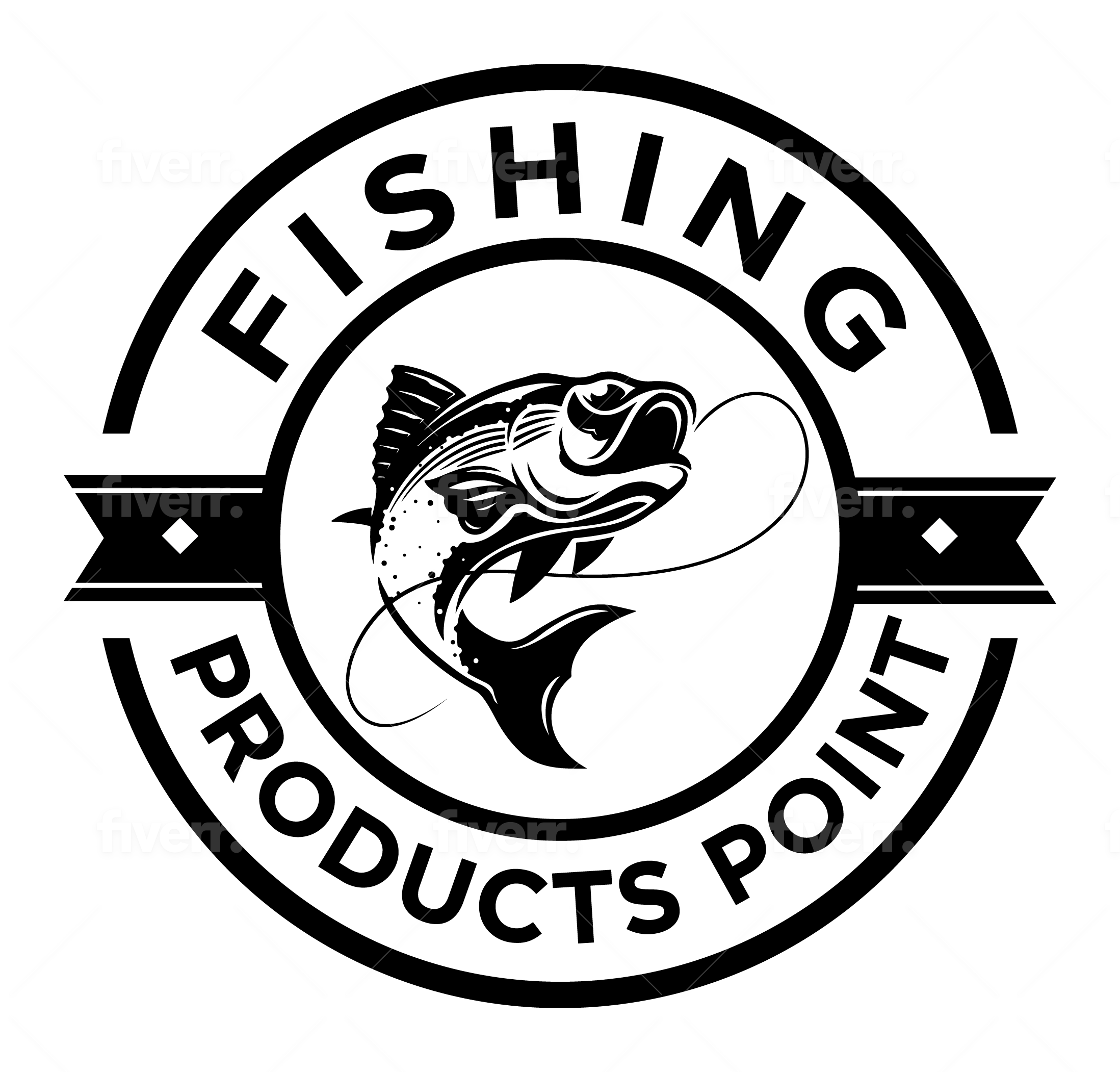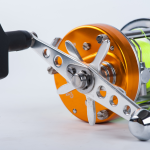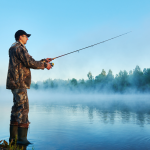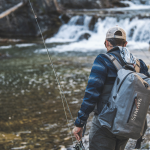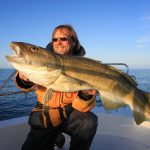Fishing is a calm and entertaining hobby that people of all ages and ability levels have fun with. Whether you want to catch some fish for dinner, compete in a tournament, or just enjoy the outdoors, fishing can offer you many benefits and rewards.
However, fishing can also be challenging and frustrating if you don’t know what you’re doing. That’s why we’ve compiled this list of tips for fishing beginners to help you get started on your fishing journey.
Things You Need
You will require a fishing rod and reel. Following that, you will require a fishing line. Varieties of fishing lines exist, including monofilament, fluorocarbon, and braided options, each possessing its own set of benefits and drawbacks.
Concluding the essentials, fishing hooks and lures are also a necessity. Hooks are the metal pieces that pierce the fish’s mouth and hold them on the line. Lures are artificial or natural baits that attract fish to bite the hook. There are many kinds of hooks and lures, each designed for different species, sizes, and behaviors of fish.

For beginners, we suggest using simple hooks and lures that are easy to use and effective for most situations. Now, move on to the list of tips for fishing.
Tip 1: Get the Correct Gear
Prior to your fishing venture, ensuring you have the correct gear in place ranks among the foremost essential tasks. You don’t need to spend a fortune on fancy equipment, but you do need to have some basic items that will make your fishing experience more enjoyable and successful.
Tip 2: Learn How to Cast
Once you have your gear ready, you need to learn how to cast your line into the water. Casting is one of the most basic but essential skills in fishing, as it determines where and how far you can fish.
Different methods of casting depend on your equipment and circumstances. However, for beginners, we recommend learning how to cast using the overhead method, which is simple and effective for most scenarios. Execute the overhead casting technique by adhering to these outlined steps.
- Grasp the rod using your dominant hand, positioning your index finger atop the line just above the reel.
- Open the bail (the metal arm that holds the line on the reel) by flipping it up.
- Bring your rod behind your head, pointing it slightly upward.
- Swing your rod forward, releasing your index finger from the line when the rod is pointing at your target.
- Close the bail by flipping it down, and reel in any slack line.
- Repeat as needed until you reach the desired fishing spot.
That’s how you cast using the overhead method. You can practice this technique on land before you go fishing, to get a feel for it and improve your accuracy and distance. Just make sure you don’t hook anything or anyone by accident!
Tip 3: Choose the right fishing rod and reel
A fishing rod and reel stand as the fundamental equipment necessary for your fishing endeavor. A rod is a long, flexible stick that holds the line and the lure. A reel serves as a mechanism that enables you to both spool and release the fishing line.
For those new to fishing, it’s advisable to opt for a rod of approximately 7 feet in length, possessing a medium level of strength. This selection provides a well-rounded compromise between reach and flexibility, enhancing your fishing experience.
A spinning reel is easier to use than a bait casting reel because it has a lower chance of tangling the line. You can buy a rod and reel combo that is already matched for you, or you can ask a store clerk for advice.
Tip 4: Learn how to tie fishing knots
Fishing knots are the ways you attach your line to your hook, lure, swivel, or leader. There are many fishing knots, but learning just a few basic ones is enough to start your fishing adventure. The most common fishing knots are the improved clinch knot, Palomar knot, and surgeon’s loop.

You can search some guidelines and skills to grip on how to tie these knots online or in fishing books. It is recommended that you practice tying these knots in the comfort of your own home until you are able to perform them with ease and efficiency.
Tip 5: Match your lure to the watercolor and the fish
A lure is an artificial bait that looks like a fish or an insect. It is designed to attract fish and make them bite. There are many kinds of lures, such as spoons, spinners, jigs, plugs, and soft plastics. Each lure has a different shape, size, color, and action. You should choose a lure that matches the watercolor and the type of fish you are targeting.
For example, if the water is clear, you should use a natural-looking lure that blends in with the environment. In case the water is not clear, opt for a lure with vibrant colors that catch attention. You should also use a lure that imitates the food that your target fish likes to eat.
Tip 6: Choose the right fishing line
A fishing line is a thin cord that connects your rod and reel to your lure. Fishing lines contain three basic kinds: monofilament, fluorocarbon, and braided. Every kind has its benefits and drawbacks. Monofilament is best choice for new fishers because it is cheap, easy to handle, and stretchy.
It works well with most lures and water conditions. Fluorocarbon is more expensive, harder to handle, and less stretchy than monofilament. It is good for clear water because it is invisible to fish. It also sinks faster than monofilament, which is good for deep water or bottom fishing.
Braided is the most expensive, strongest, and thinnest type of fishing line. It is good for heavy cover or vegetation because it can cut through them.
Tip 7: Fish at the right time of day
The time of day can affect how active and hungry fish are. Usually, fish are more inclined to nibble during the early morning or late evening hours when they are actively searching for food. These times are also cooler and less crowded than midday. You can also check the weather and the moon phases to see how they influence fish behavior.
For example, fish tend to bite more when it is cloudy or rainy than when it is sunny or windy. They also tend to bite more during a full moon or a new moon than during other moon phases.
Tip 8: Find a good fishing spot
A good fishing spot is where fish like to hang out and feed. You can find these spots by looking for signs of fish activity, such as bubbles, splashes, ripples, or birds diving into the water.
You can also look for features that provide fish with shelter, food, or oxygen, such as rocks, weeds, logs, docks, bridges, or currents. You can use a map or an app to locate these spots before you go fishing or you can ask other anglers for advice.
Tip 9: Cast your line correctly
Casting your line is how you throw your lure into the water where you want it to go. When casting using a spinning reel, grasp the rod with your stronger hand and release the bail, which is the metal wire holding the line.
Press the line against the rod handle using your index finger and aim the rod tip towards your intended target. Gently swing the rod backward behind your shoulder and then swiftly bring it forward while letting go of the line at the conclusion of the forward motion. Close the bail and reel in any slack line.
Tip 10: Choose the right lure
For the fish you want to catch fishes are attracted to unique lures. Certain lures imitate the look and motion of real prey, while others generate vibrations and sounds that catch the fish’s attention. You should research the fish species you want to catch and find out what kind of lures they prefer.
For example, the bass is often caught with spinner baits, crankbaits, and soft plastics, while trout are more likely to bite on spoons, spinners, and flies.
Tip 11: Set the hook
When you sense a fish biting your lure, respond by swiftly and firmly raising the rod tip to set the hook in its mouth. By doing so, the hook will be forced into the fish’s mouth and won’t be able to escape.
You should not jerk the rod too hard or too softly, as this could either rip the hook out of the fish’s mouth or fail to secure it. You should also avoid setting the hook too soon or too late, as this could result in missing the fish or losing it during the fight.
Tip 12: Fight the fish with patience and skill
Once you have hooked a fish, you need to fight it until it is tired enough to be reeled in. You should keep your rod tip up and keep a constant pressure on the line. You should not reel in when the fish is pulling hard, as this could break your line or damage your reel. Instead, you should let the fish run and use your drag system to control its speed.
You should also follow the fish’s movements and adjust your rod angle accordingly. When the fish stops running, you should reel in some line and repeat the process until you can bring it close enough to net or land it.
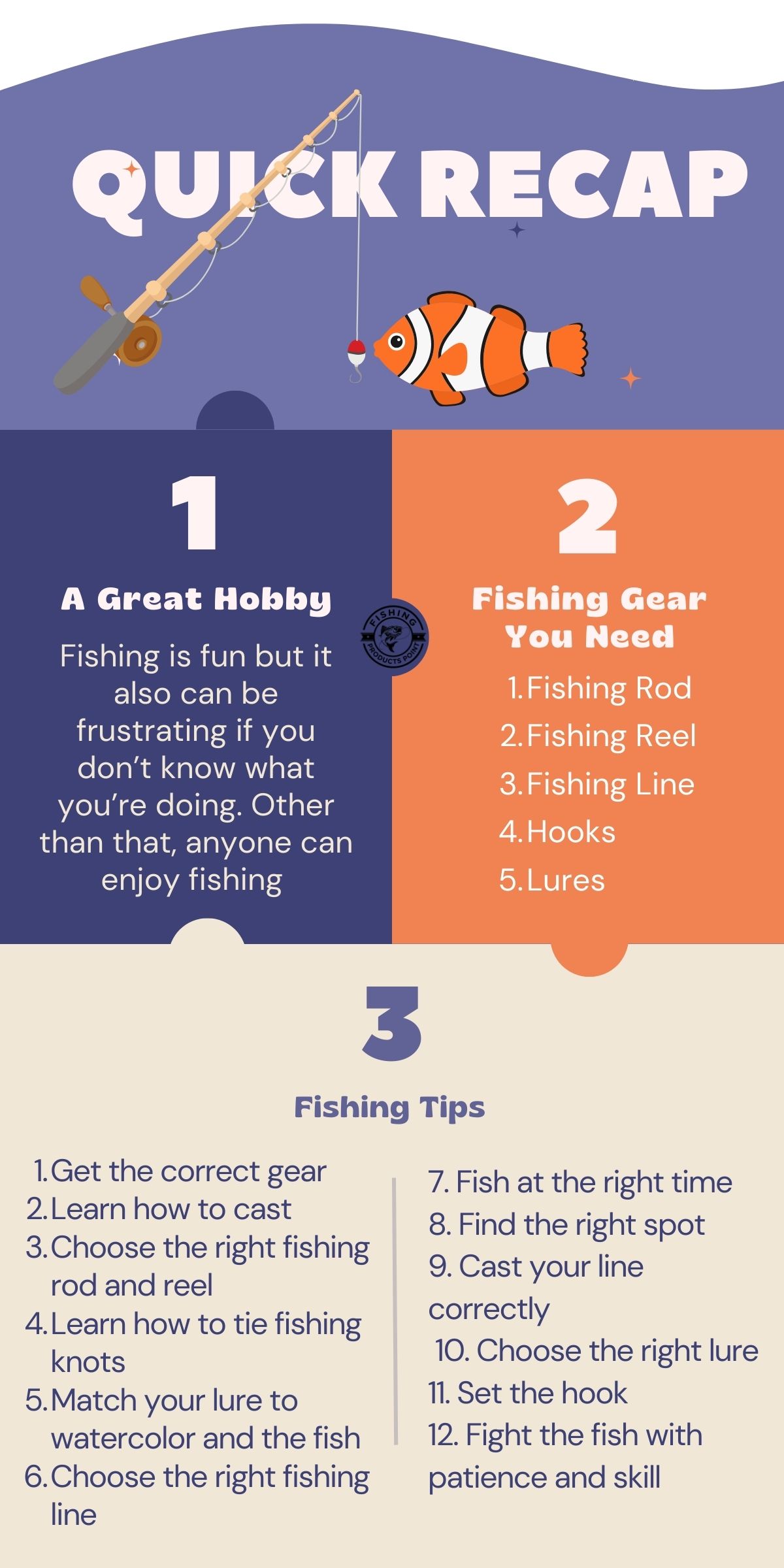
Frequently Asked Questions:
Here are some possible FAQ’s about fishing tips and tricks that are concise and short:
When is the best time to fish?
Usually, dawn and dusk, when fish are feeding also, when the water temperature is right for the fish.
What rod and reel should I use?
It depends on the type, size, and strength of the fish you want to catch. Spinning rods and reels are good for beginners and freshwater fishing. Bait casting rods and reels are good for experts and saltwater or big fish fishing.
How do I tie a fishing knot?
A: There are many kinds of fishing knots. Learn a few basic ones that suit your fishing needs, such as the improved clinch knot, the Palomar knot, the uni knot, and the loop knot. Practice them until you can tie them well. Check them often for wear or damage.
Conclusion
As the day ends by the water, fishing is more than a hobby—it’s a connection to nature’s rhythms and mysteries. By following the tips for fishing in this article, you improve your angling skills and become a steward of the waters. Keep in mind that each cast presents a fresh opportunity for exploration and a moment to engage with the world around us.
So, whether you’re casting for the thrill of the catch or casting away the worries of everyday life, let the journey of fishing be a reminder that there’s magic in patience, wisdom in adaptation, and harmony in respecting the delicate balance of nature.
